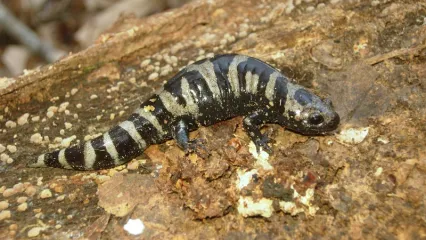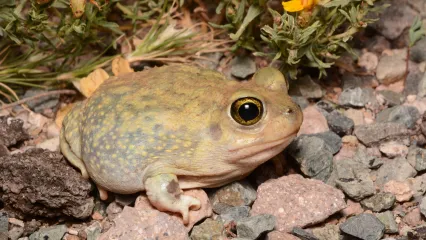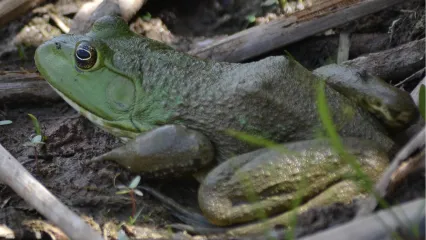
Description
Marbled salamanders have been described as a “chunky salamander.” They have a black body color with 7 to 16 light markings or bands across the back and tail. These bands tend to be white in males, gray in females.
Size
Marbled salamanders can reach 3 to 4 inches in total length.
Habitat
Marbled salamanders prefer moist woodland areas and have been documented in a six county area in southeastern Oklahoma, including LeFlore, Latimer, Pushmataha, Atoka, Choctaw and McCurtain counties. A small population also has been documented in Adair County.
Life Cycle
Like many other species in the “mole salamander” family, marbled salamanders remain underground most of the year. In the fall, they migrate to areas near small pools of water after a rain event to breed. Females lay 50 to 200 eggs in a small depression and broods the clutch, keeping the eggs protected and moist until the rains arrive. The eggs must be later submerged in rain or flood water to develop. Hatching can occur within days of a flooding event. Marbled salamanders feed on invertebrates like earthworms.

